E-Museum of Pyrographic ArtAntique Art Hall
|
| - Café Flambé - | - Portraits and Paintings - | - Decorative and Applied Art - |
| - Folk and Traditional Art - | - Antique Art - | - Special Hall - | - Sculpture - |
| - Children's Hall - | - Bookstore and Library - | - Tools and Techniques - |
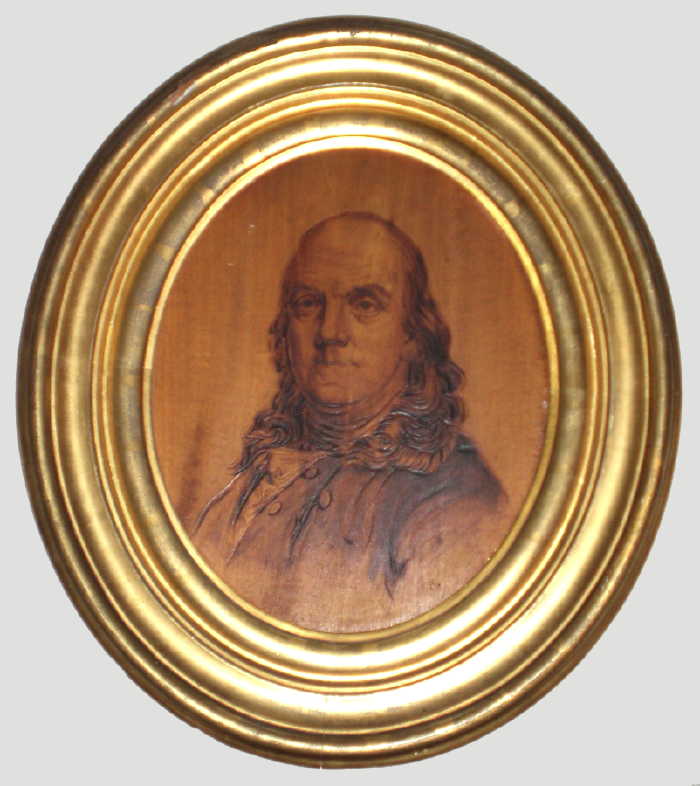 |
| Benjamin Franklin By Ball Hughes, 1856 Pokerwork on oval framed wood panel, inside frame 10 in. tall by 8 in. wide Image thanks to the owners |
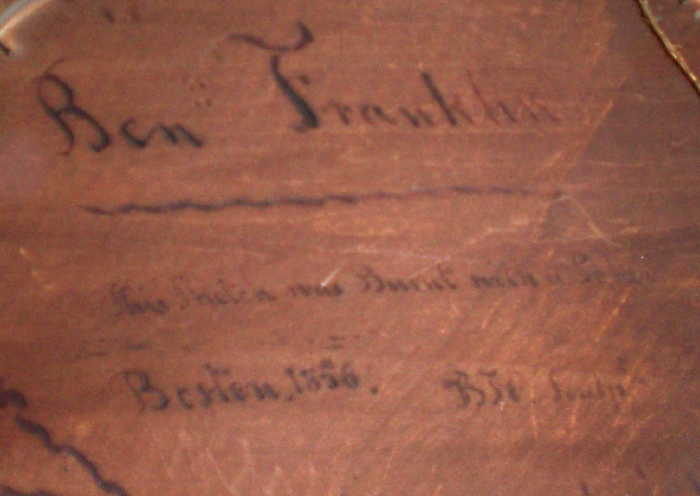 |
| Benjamin Franklin, verso, detail By Ball Hughes, 1856 Inscription, verso, reads: Ben FranklinPokerwork on oval framed wood panel, inside frame 10 in. tall by 8 in. wide Image thanks to the owners |
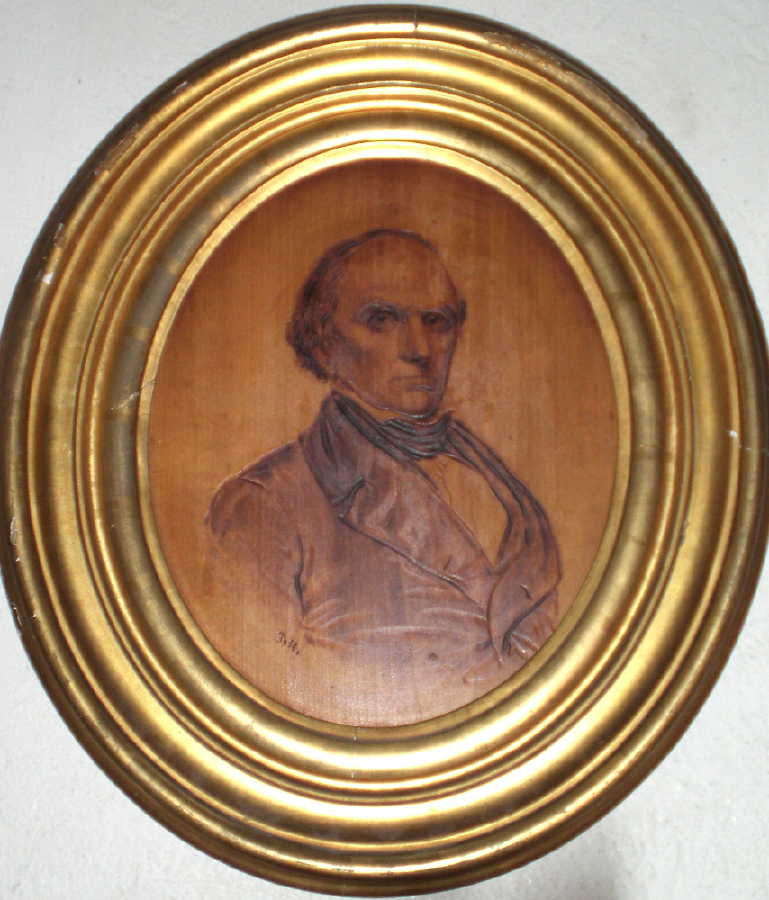 |
| The Hon. Daniel Webster By Ball Hughes, 1857 Pokerwork on oval framed wood panel, inside frame 10 in. tall by 8 in. wide Image thanks to the owners |
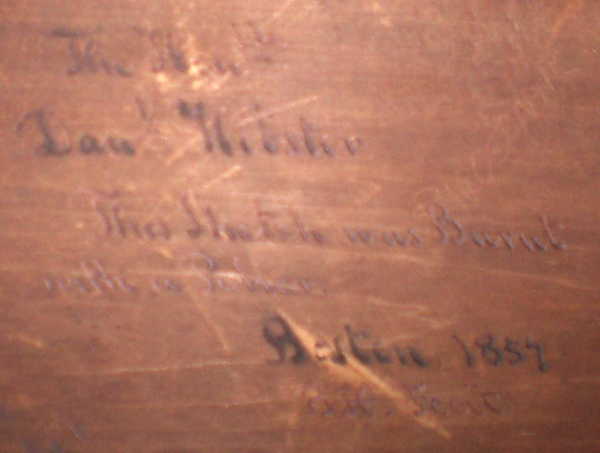 |
| The Hon. Daniel Webster, verso, detail By Ball Hughes, 1857 Inscription, verso, reads: The HonblePokerwork on oval framed wood panel, inside frame 10 in. tall by 8 in. wide Image thanks to the owners |
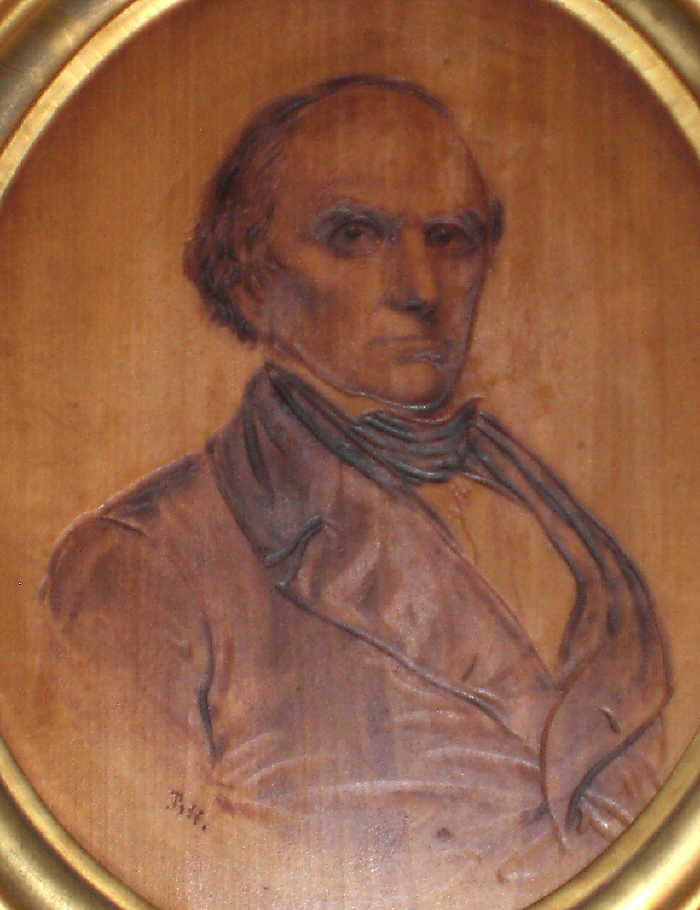 |
| The Hon. Daniel Webster, detail of the figure By Ball Hughes, 1857 Pokerwork on oval framed wood panel, inside frame 10 in. tall by 8 in. wide Image thanks to the owners |
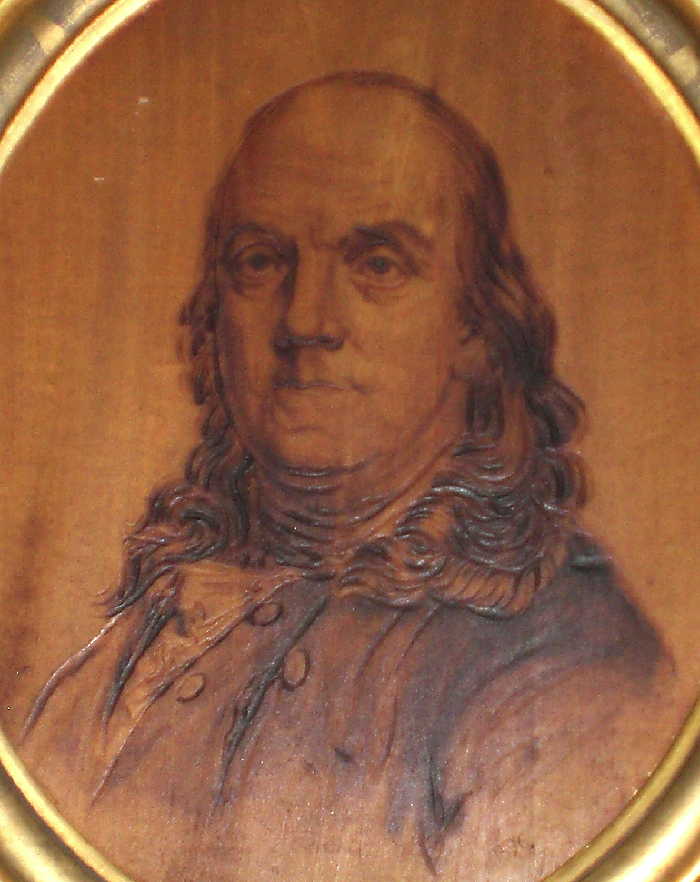 |
| Benjamin Franklin, detail of the figure By Ball Hughes, 1856 Pokerwork on oval framed wood panel, inside frame 10 in. tall by 8 in. wide Image thanks to the owners |
This pair of oval portraits by Ball Hughes of Benjamin Franklin and Daniel Webster belongs to Michael & Christina Lanoue of Arizona, U.S.A. Whereas other Ball Hughes portraits of Daniel Webster have been found, this is the only example of a Benjamin Franklin portrait that has come to light so far. (Its existence was already known from an old newspaper account from Ball Hughes' time that had been found in the Smithsonian's files.)
Most of Ball Hughes's poker paintings were portraits, and usually done after the paintings or photographs of other famous artists. Research indicates that his portrait of Daniel Webster, which he rendered several times in pyrography, was no exception, as it appears to be done after a well known photograph of the venerable statesman. However, because presumably Daniel Webster would have sat for Ball Hughes in preparation for his portrait sculpture (which was willed to his daughter Julia, as published in his letters at the link here), it seems likely that Ball Hughes would have also done his own sketch of Daniel Webster for that sculpture. If that were the case, the question arises as to why he would not have used his own sketch in preparation for his pyrographs. Is it possible that he also created the sculpture from that photograph? Or is it even possible that the "little bust" Daniel Webster willed to his daughter Julia was actually a pyrographic portrait bust, that is, the one we've been seeing all along, perhaps the first of the many Ball Hughes did (like the two above) that were in obviously popular demand? As it turns out, Daniel Webster resided in Dorchester for a period, which may account, in part at least, for the exceptional demand there in Ball Hughes's social circle for Webster's portrait above all others.
The artist Robert Ball Hughes was born January 19, 1804, in London, England, U.K., and died March 5, 1868, in Dorchester, Massachusetts, U.S.A.
Ball Hughes, which is how he usually signed his name on most of his poker works, i.e., without his first name Robert, was not only a pyrographic artist but an eminent English sculptor and engraver, who had studied at the Royal Academy.
It is interesting to note on both panels in this pair that they are initialed "B.H." on the recto (front) in each case (although on the Franklin panel, the initials, which are located on the lower right ("sleeve"), are somewhat faint), and on the verso (back) both panels are signed with only initials, as well, despite their having elaborate inscriptions there in both cases. There are other examples of Ball Hughes' works where he did this, i.e., signed with only his initials B. H. instead of signing Ball Hughes, but it is not known why. His widow described him as a very humble man, so perhaps that explains his oversight.
There is one more anomalous item regarding the inscription on the back of the Benjamin Franklin portrait: instead of his writing his usual fecit following his initials meaning "made it" in Latin, i.e., B. H. made it or made by B. H., which was a convention of that time, Ball Hughes instead seems to have written B. H. sculpt (with the 't' written in superscript). It is difficult to say whether this was deliberate or simply an oversight (because he thought of himself first and foremost as a sculptor). As everyone who knows pyrography knows well, once you burn something into the wood, it cannot really be corrected. In any case, it makes this piece even more special that he termed it the equivalent of Ball Hughes sculpted it or perhaps Ball Hughes sculptor, particularly since this portrait appears to have a lot of texture, where its technique would more specifically be termed pyroengraving.
The provenance of this pair of portrait panels is not entirely known at this time; Mike explained that he and his wife Christina were given the portraits in 1980 by her grandparents, who were residents of Pittsfield, Massachusetts and who, it is believed, had purchased them in the late 1940's either while on a trip to England, or possibly in the Boston area, where they were frequent visitors.
If you have any questions or any additional information to offer about Ball Hughes or these oval portraits, please e-mail Michael Lanoue and the E-Museum Curator.
You are leaving the Ball Hughes Salon No. 19–20.
You can return to the
Antique Hall
or visit one of the following:
Pyrographic Art Exhibit Halls:
Portraits and Paintings
Decorative and Applied Art
Sculpture
Traditional and Folk Art
Children's Pyrographic Art
Special Pyrographic Art
The Book Store and E-Museum Library
Pyrography Tools and Techniques
Your questions and comments are welcome and appreciated.
Please e-mail the E-Museum Curator
Back to E-Museum Entrance homepage
© 2009, Kathleen M. Garvey Menéndez, all rights reserved.
23 May 2009. Last updated 8 November 2009. Revised 02 January 2011.

